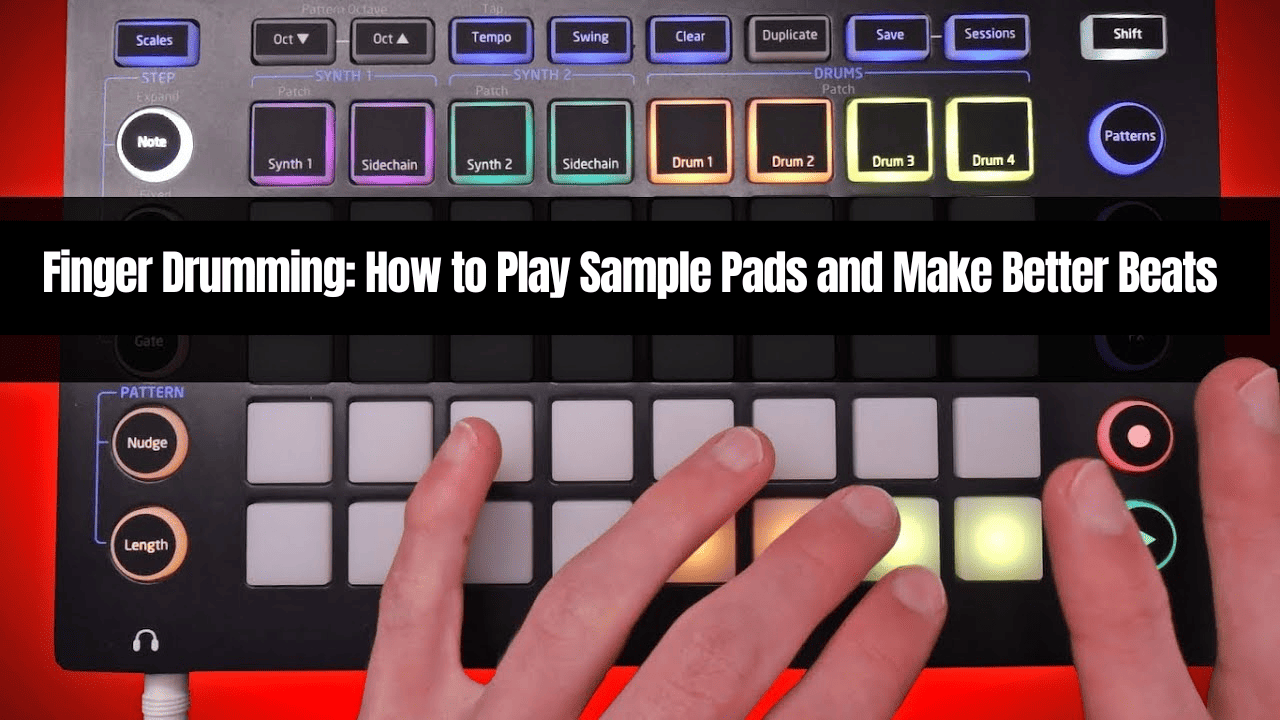Finger drumming is one of the most popular ways to create beats. You can easily create professional and polished rhythms and beats using a sample pad. If you want to make better beats, then you need to start finger drumming on sample pads. Finger drumming is a great way to improve your beat-making skills and create new and innovative rhythms. In this blog post, we will show you how to finger drum on a sample pad and provide tips for making better beats. Let’s get started!
What is finger drumming?
It is a musical style that uses the hands and fingers to produce percussive sounds. It can be used to accompany other instruments or to provide a rhythmic foundation for a song. While finger drumming has been around for centuries, it has only recently gained popularity as a solo performance art. Thanks to the advent of technology, finger drummers can now use digital pads and sensors to create a wide range of sounds and rhythms. As a result, finger drumming has become an increasingly popular way to create music. Whether you’re looking to add some spice to your performance or want to explore a new way of making music, finger drumming is worth checking out.
8 Finger Drumming Techniques And Tips – How To Finger Drum?
Finger Drumming is a versatile style that can be used in many different genres of music. Here are some techniques and tips to get you started:
1) Get a sampler pad or groovebox:
If you want to learn how to finger drum, one of the best ways is to get a sampler pad or groovebox. These devices have pre-defined drum kits that you can use to play along with your favorite songs. They also typically have a variety of different sounds that you can use to create your own beats. In addition, many of these devices come with built-in metronomes that can help you keep time while you’re playing. Best of all, they’re relatively inexpensive and easy to find online or at your local music store.
2) Experiment with different rhythms:
Once you have your sampler pad or groovebox, it’s time to experiment with different rhythms. Don’t be afraid to try something new or out of the ordinary. The beauty of finger drumming is that there are no rules, so you can make up your rhythms and beats as you go along. Plenty of online tutorials and instructional videos can help you get started if you get stuck. And if you want to challenge yourself, try coming up with some original finger-drumming patterns.
3) Use a metronome:
Another important tip for finger drumming is to use a metronome. This will help you keep time while you’re playing and ensure that your beats are steady and consistent. You can find metronomes online or at most music stores. Start by setting the metronome to a slow tempo and gradually increase the speed as you become more comfortable with the rhythm. Once you have the hang of it, you’ll be able to finger drum easily and confidently.
4) Find some good finger drumming tutorials:
Once your device is set up, it’s time to start learning finger drumming techniques. The best way to do this is by finding some good tutorials online. There are a variety of websites and YouTube channels that offer helpful guides for beginners. These tutorials can teach you the basic principles of finger drumming and help you get started developing your own style.
5) Learn the basic strokes:
The next step in learning how to finger drum is to familiarize yourself with the basic strokes. There are four main strokes that you’ll need to know: the downstroke, the upstroke, the side stroke, and the backstroke. Start by practicing each stroke independently, and then try combining them differently. For example, you might start with a downstroke followed by an upstroke. As you become more comfortable with the strokes, you can increase your patterns’ speed and complexity.
6) Experiment with different sounds:
One of the great things about finger drumming is that there are no rules regarding sound selection. You can use any sound you like, whether a traditional drum sound or something unique. Don’t be afraid to experiment with different sounds and see what works best for you. You might find that certain sounds help you create more complex patterns or that they add a new level of expression to your playing.
7) Practice regularly:
Like any skill, finger drumming takes time and practice to master. The more you play, the better you’ll become at creating complex patterns and rhythms. So, set aside time each day to practice your finger drumming skills. You might even want to create a practice routine that includes other aspects of music production, such as working on your mixing skills or learning new synthesizer patches.
8) Perform live:
Once you’ve mastered the basics of finger drumming, it’s time to take your skills to the stage. Performing live is a great way to showcase your talents and get better at improvising on the fly. If you’re nervous about playing live, start by performing for friends and family first. Then, once you’ve built up your confidence, look for opportunities to perform at local clubs or venues.
Conclusion
While you don’t need a degree in cognitive neuroscience to make great music, it can’t hurt to understand how our brains process sound and why we react the way we do when listening to certain rhythms. With that knowledge, you can create beats that are specifically designed to maximize their appeal. And who knows? Maybe your skills will be good enough to teach a finger drumming class one day.


